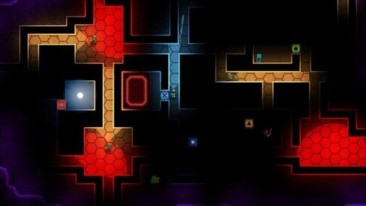But to Paint a Universe from Marten Jonsson – What We Think:
What is it with soothing puzzle games these days? It seems like you can’t swing a dead cat (not that you’d want to) without hitting a casual puzzle game that’s intended to be approachable, lightly challenging, and low-pressure. As I enter the demographic where people start losing hand-eye coordination as a result of physical degradation rather than intoxication, I feel I should appreciate games that don’t rush me, ask me to perform bizarre feats of hand-spraining prestidigitation to beat a level, or stand around on my lawn. So I find it a bit of a surprise that I’m not as interested in But to Paint a Universe as I’d expected I’d be.
If you’ve ever played any of the gem matching games, from the classic Bubble Bobble to the more recent (and shockingly addictive) Puzzle Quest series, you’ve noticed that the one thing standing between you and some truly profound combinations of matching gems is the timer. Whether it’s just the steady drift of gems or bubbles down the screen, the breakneck pace of a rival gem-matcher, or simply a devastatingly brief amount of time to make a move, these games seem to shove you past the glittery colors, fascinating patterns, and upbeat J-pop. Like a buffet on a lunch break, you’ve got lots to appreciate, but no time in which to do it.
Enter But to Paint a Universe. It’s clearly inspired by the hectic gem puzzle games, but it trades the “just click something already” pace for a slower, more deliberate speed. It demands the same planning and foresight, but it allows you to take as much time as you need. Your time is unlimited, but your moves are not, and so it encourages a very targeted, cerebral, deliberate play style.

Did I mention deliberate? It’s a matching game that you can play with one hand, while you read, eat, or whatever else you do with the other. It’s not that there isn’t challenge, because it really does throw you some curve balls. It’s just that there’s no pressure whatsoever.
The goal is to match a certain number of pairs of like-colored balls. Rather than the traditional horizontal, diagonal, and vertical rows, each column will have a golden circle as a target. Clicking balls eliminates those balls and adjacent balls of the same color—industry standard—but the staggered target circles mean that this often results in unexpectedly losing a ball that you need. Unlike any of its cousins in the genre, this game does not reward rapid-fire clicking and matching.

Luckily, despite the challenge, there is no rush. Really. And, strangely, I found myself missing the pressure. There is a story to the game, but it isn’t a role-playing game, or an adventure game, so there’s no sense of developing a character or building on previous efforts. Levels get more difficult, but the motivation remains fairly lacking. If you don’t find the first level compelling, you won’t find the rest fundamentally different. This can be a problem when playing the game amounts to clicking on pastel balls. I have definitely quit games because they were too hard or too frustrating, but the worst thing is to stop playing because you don’t care.
As a caveat, because I feel like I might be unfairly harsh on the game, there are audiences who will love this. It’s as casual as it gets, and it’s not demanding on system resources. The idea is a novel twist on a tried-and-tested model. It’s G-rated, encourages mindful play, and is easy to pick up and put down, so parents and kids could enjoy this together without worrying about any levels where they’ll be required to shoot up an airport full of civilians, for example. At the risk of damning the game with faint praise, it’s a great game for extremely casual players.
There seems to be a movement in the indie scene towards these very peaceful, gentle, Zen-like puzzle games. It’s like developers are deconstructing what a game is, reinventing what has traditionally been a very challenge-driven, competitive, high-pressure medium. Within that context, But to Paint a Universe succeeds admirably, and casual gamers could certainly do worse than pick it up. However, if you’re not traditionally drawn to the casual genre, you won’t find much here to interest you.
Available for purchase via IndieVania, IndieCity, Gamersgate and Fastspring
[xrr rating=”2.5/5″]





